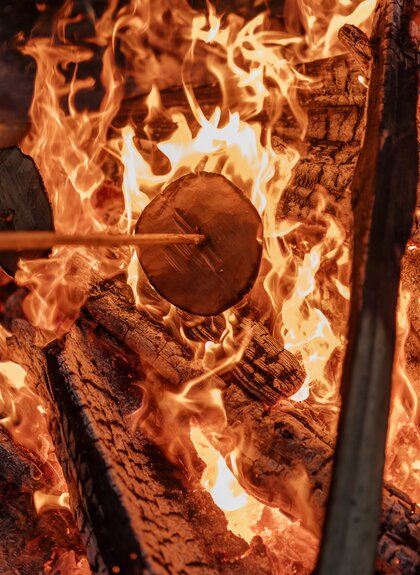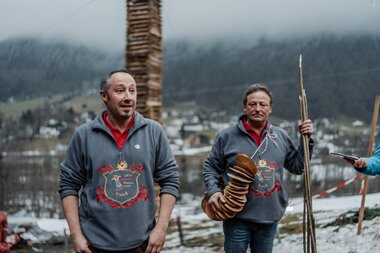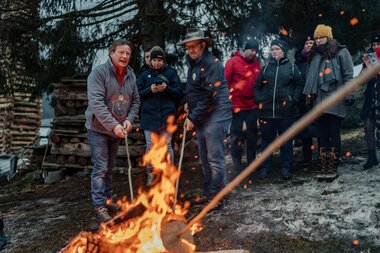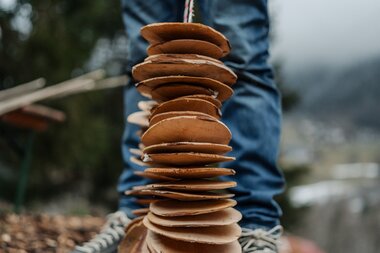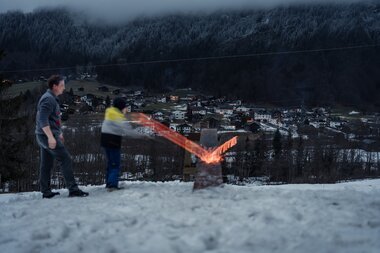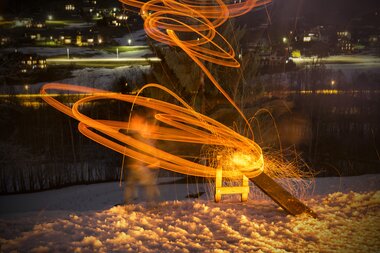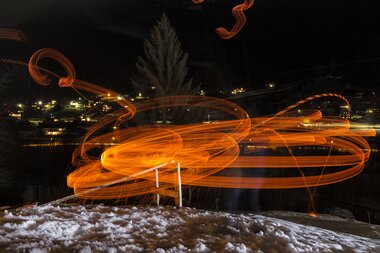Disc flinging in Gortipohl
A piece of Montafon cultural history is a UNESCO intangible heritage site
Disc flinging (Scheibenschießen) in Gortipohl is unique in the Montafon. The tradition has been passed down from generation to generation.
The origins of this initially pagan ritual go back centuries. Today, disc flinging is an integral part of social life in the village and has also been listed on the UNESCO National Heritage List since June 2016.
On Funkasunntig, the first Sunday of Lent, the villagers of Gortipohl meet on the Funkenplatz after dark. Around 500 glowing discs fly through the night - all made by hand.
"It takes about ten minutes to make a disc," explains Jürgen Wachter, chairman of the Gortipohl sparking guild. "The special shape ensures an optimal trajectory." In the past, target shooting or target hitting was the job of young people, but today the Funkenzunft keeps this tradition alive.

"The disc flinging is a big event every year. Anyone and everyone can take part, many bring their own homemade targets"
Jürgen Wachter, Gortipohler Funkenzunft chairman
The first shooter sticks a target on his hazelnut stick, makes it glow in the fire and hits it over the wooden bench. Amid applause, it traces a glowing arc through the night.
"Let it fly as far as possible"
In the past, slogans were shouted when breaking targets - sometimes as an honor, sometimes as mockery. This custom has disappeared in Gortipohl. "We don't know when and why the rhymes were lost. Today, the most important thing is to make the disk fly as far as possible," says Jürgen Wachter.
And he succeeds: with a good hit, the "Schieba" flies up to 150 meters. Incidentally, in Montafon dialect it is not called "Scheibenschlagen", but "Schiebaschlaha".
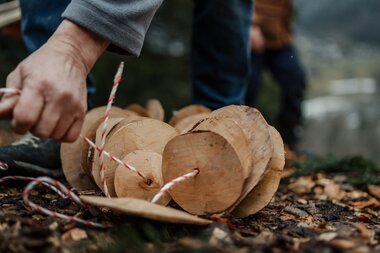
Proud of their own history
Preserving a centuries-old tradition fills Jürgen Wachter with pride: "It's a relaxed feeling when you have such a great honor as a small club. You're passionate about it - in the truest sense of the word."
A special accolade: target shooting has been added to UNESCO's list of intangible cultural heritage. "Being mentioned in the same breath as the Lipizzaner horses and the Vienna Riding School means a lot to us. We will pass on this heritage."

